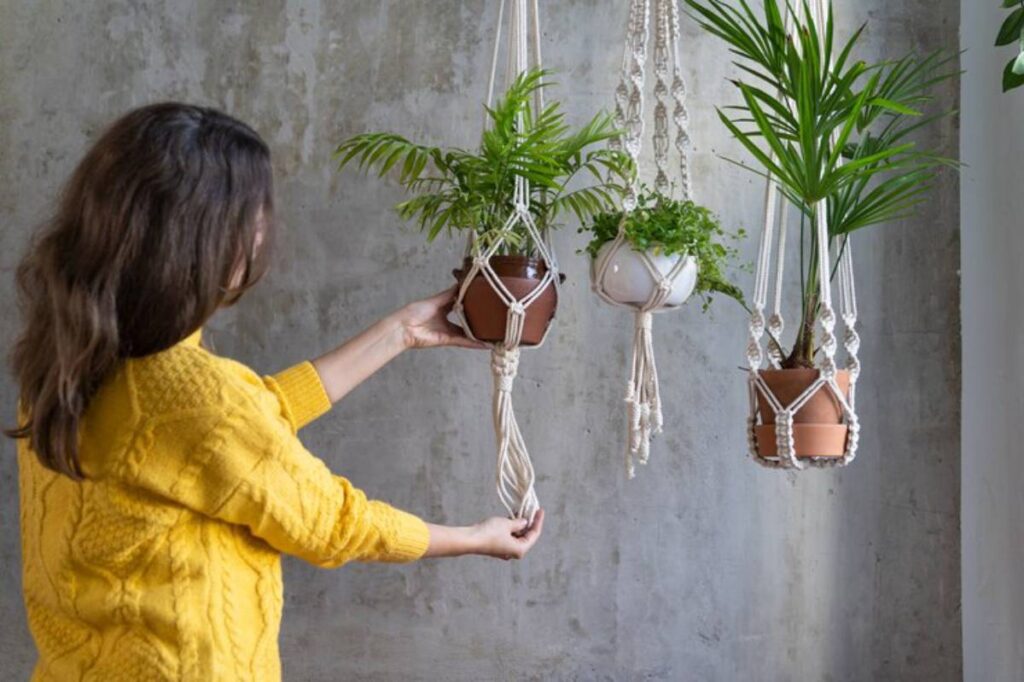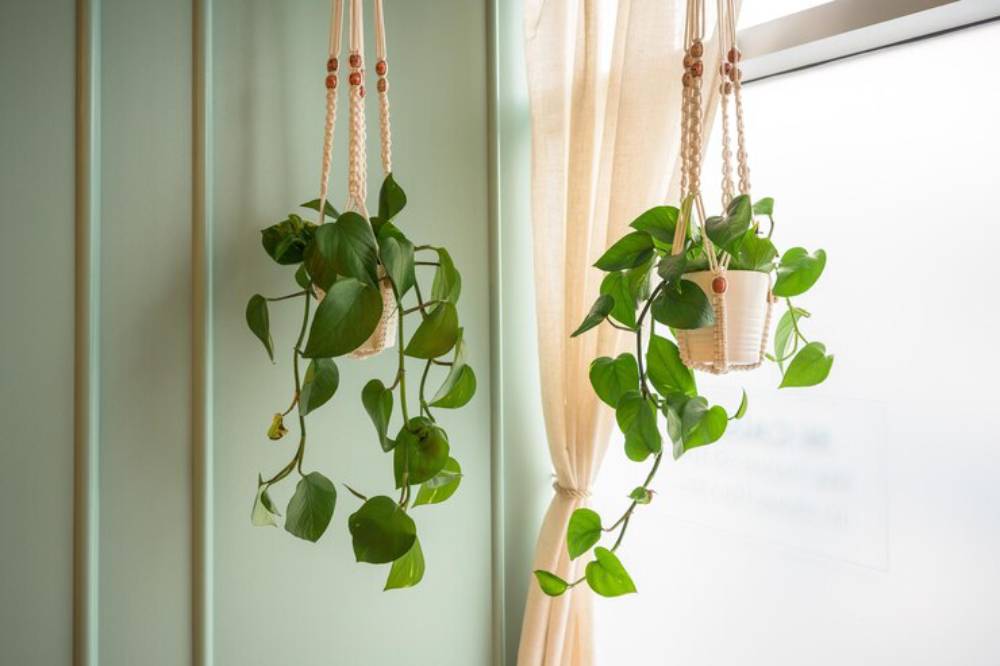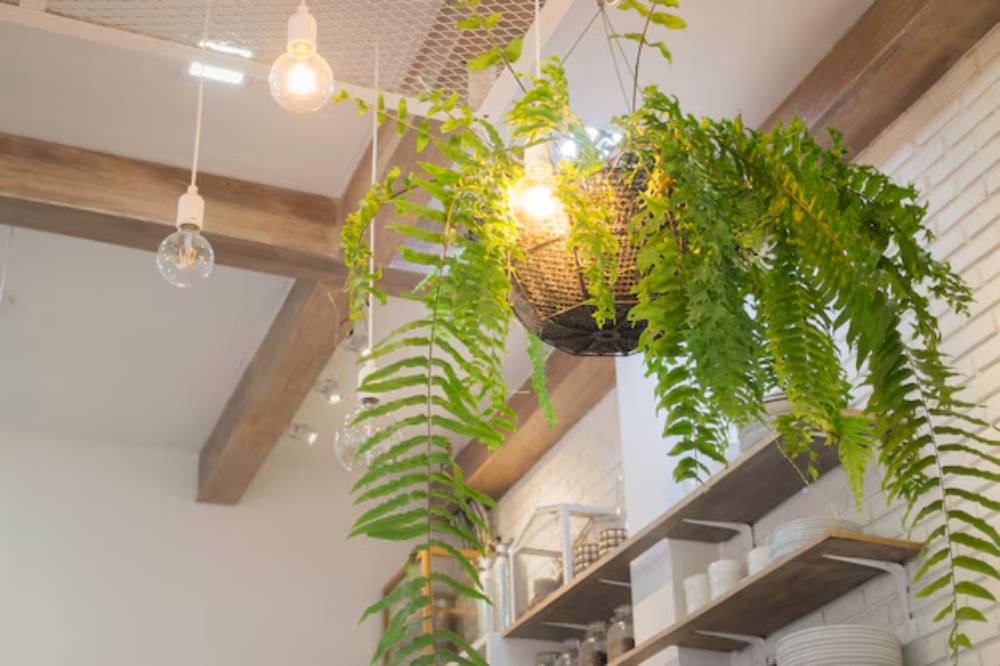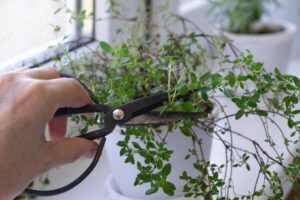The Interior Blog

How to Decorate Safely with Hanging Plants
Hanging plants add instant charm, depth, and lushness to any space. Whether it’s cascading ivy by the window or a floating fern in the bathroom, they help maximise vertical space while creating a cosy, nature-inspired atmosphere. But if you share your home with curious toddlers or cheeky pets, those trailing vines and swinging planters can quickly become a source of anxiety.
Safety doesn’t have to mean sacrificing style. With a few thoughtful adjustments, you can embrace the beauty of hanging greenery while keeping your loved ones — two- or four-legged — safe from harm.
In this article, we’ll show you how to decorate safely with hanging plants, covering everything from secure installations to choosing safe hanging plants for pet-friendly décor. You’ll also discover toddler-safe styling ideas that balance aesthetics and practicality. Whether you live in a bustling family home or a serene flat with a mischievous kitten, you’ll find solutions that bring peace of mind along with botanical beauty.
Why hanging plants are perfect for family homes

They save space while adding softness
Hanging plants help you take advantage of vertical space, especially in smaller homes or apartments. They free up shelves, counters, and floor areas while softening hard lines and brightening up dull corners.
They’re out of reach — if placed correctly
One of the biggest advantages of hanging plants is that they can be installed out of reach from little hands or paws. Properly mounted, they’re less likely to be toppled, chewed, or played with.
They offer a layered look without clutter
Want to add depth to your décor without overwhelming the space? Hanging plants provide that third dimension, especially when combined with eye-level foliage or ground-level planters.
Key safety considerations before you hang a single pot
Before jumping into styling, you’ll need to assess a few important safety factors to avoid accidents, especially in homes with young children or pets.
1. Secure installation is non-negotiable
Always use:
- Ceiling hooks rated for the planter’s weight (including soil and water weight)
- Wall anchors or toggle bolts for drywall ceilings
- Studs or joists were possible for extra security
Avoid: Adhesive hooks, cheap plastic anchors, or tension rods — these are prone to failure, especially in humid or high-traffic areas.
2. Mind the height and swing zone
Your hanging plants should be:
- Well above head height — especially for toddlers or jumpy cats
- Away from doorways and walkways
- Far from shelves or furniture that children or pets might climb on
This keeps plants from becoming dangling temptations or accidental obstacles.
3. Choose planters with no-drip designs
Use:
- Self-watering hanging pots with reservoirs
- Double-pot systems (nursery pot inside a decorative cover)
- Lined macramé holders or hanging baskets with saucers
Avoid hanging planters that drip water when overfilled — they can damage floors, furniture, and create slip hazards.
Best safe hanging plants for pet- and child-friendly homes
Not all greenery is created equal. Some houseplants, while gorgeous, are toxic to cats, dogs, or even children. Here are the top safe hanging plants for your indoor spaces.
1. Spider Plant (Chlorophytum comosum)
- Why it’s safe: Non-toxic to pets and kids
- Style note: Elegant green-and-white fronds with baby offshoots that dangle like decorations
- Care: Low maintenance, thrives in indirect light
2. Boston Fern (Nephrolepis exaltata)

- Why it’s safe: Soft, non-toxic fronds
- Style note: Adds volume and texture, especially in bathrooms
- Care: Loves humidity and moisture; great for bathrooms
3. Peperomia Hope (Peperomia rotundifolia)
- Why it’s safe: Pet-safe and compact
- Style note: Trailing round leaves create a modern, clean look
- Care: Prefers medium light and moderate watering
4. String of Hearts (Ceropegia woodii)
- Why it’s mostly safe: Mildly toxic in high quantities — hang high and out of reach
- Style note: Romantic, delicate vines with heart-shaped leaves
- Care: Drought-tolerant and easy to grow
5. Calathea varieties (e.g. Calathea lancifolia)
- Why it’s safe: The Entire Calathea family is non-toxic
- Style note: Vibrant, patterned leaves with a full look in hanging baskets
- Care: Needs indirect light and consistent humidity
Creative toddler-safe styling ideas with hanging plants
When you have small children at home, every styling decision needs to balance form with function. Here’s how to bring hanging plants into your space without creating unnecessary hazards.
Use wall-mounted hanging planters
Instead of ceiling hooks, install wall-mounted brackets higher up where they’re completely out of reach.
These create a gallery-wall effect and work especially well for:
- Hallways
- Reading corners
- Above nursery dressers or nappy-changing areas
Hang plants above eye-level shelving
Floating shelves high on the wall are excellent places to drape trailing plants like spider plants or peperomia. Since these aren’t directly hanging, they’re also safer during rough play or active moments.
Use vertical plant ladders with built-in barriers
Some plant ladders include railing-like ledges, which prevent pots from falling. You can style them with low-maintenance hanging vines that stay put.
Install ceiling hooks above bathtubs or sinks
Bathrooms are underutilised plant zones. Hang a Boston fern or Calathea above the bath where it won’t get touched, but still thrives in humidity.
How to prevent curious cats and dogs from reaching your hanging plants
Even when a plant is suspended, a determined cat may try to jump or swat at dangling vines. Here are a few strategies to deter mischief:
- Citrus sprays: Cats dislike the smell of lemon or orange. Spraying nearby areas can discourage access.
- Motion-activated deterrents: Use a puff of air or a light sound to teach boundaries.
- Aluminium foil or double-sided tape on launch points (like window sills) can also break the habit.
Place appealing distractions — like cat grass or a pet-safe scratching post — nearby to redirect attention.
For extra pet-safe plant inspiration, explore our guide on the top 10 indoor plants safe for cats, dogs, and kids.
Where to install hanging plants for style and safety
Here are the safest and most visually appealing spots to hang your plants:
- In front of tall windows: Catch the light and elevate the look with cascading vines
- Above kitchen counters: Use narrow pots with trailing herbs or foliage
- Corner nooks: Ideal for statement pieces like a lush fern or hanging pothos (if child-safe)
- In stairwells: Floating greenery adds drama while staying well out of reach
Combine hanging plants with others at different heights to create a layered look. Our guide on layering heights to create visual balance with plants offers further styling ideas.
Common mistakes to avoid when hanging plants in child- and pet-friendly homes
Avoid these missteps to keep your indoor garden safe and secure:
- Using pots with no drainage or overflow protection
- Placing hanging vines near bunk beds or shelves
- Using thin strings or cords prone to snapping
- Ignoring the combined weight of water and soil
- Underestimating your pet’s curiosity and climbing ability
When in doubt, hang higher than you think you need to, and test installations before finalising them.
Conclusion: Elevate your décor — and your peace of mind
Hanging plants are one of the most versatile and charming ways to bring nature indoors. They lift greenery to eye level (or higher), free up space, and instantly transform a room’s character. But if you’re sharing your home with small children or pets, thoughtful planning is essential.
By selecting safe hanging plants, securing planters properly, and using smart styling techniques, you can enjoy all the aesthetic benefits without the risks. A well-hung spider plant or trailing peperomia isn’t just a design choice — it’s a sign that style and safety can thrive together.
Feeling inspired? Try hanging your first pet-safe plant this weekend and tag us in your setup. Got a question about safe installation or styling? Drop it in the comments — we’d love to help you grow your space with confidence.









